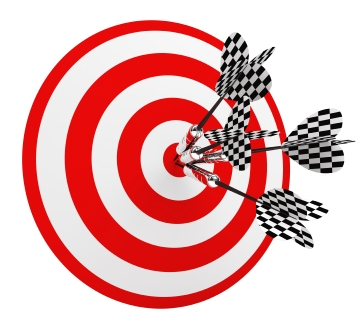 Affiliations offer companionships, respect and safety which is why folks belong and groups grow. The negative side is when we become one voice and all yes people. We all want relationships that bring us the foundation pieces. How do we remain our individuality and keep the group strong and with integrity and honesty? It is a burning question I have. Hopefully, groups will keep this issues on the forefront.
Affiliations offer companionships, respect and safety which is why folks belong and groups grow. The negative side is when we become one voice and all yes people. We all want relationships that bring us the foundation pieces. How do we remain our individuality and keep the group strong and with integrity and honesty? It is a burning question I have. Hopefully, groups will keep this issues on the forefront.
 I have been a Toastmaster for more than 30 years and was recently asked to be president. Toastmasters is critical for growth not just in the area of speaking but also for developing relationships. There are many leadership tracks to take when presenting. Toastmasters also will help develop your skills at providing feedback. I have learned how to give feedback that is impactful and empowering to the speaker. Visit www.toastmasters.org to look into joining a club.
I have been a Toastmaster for more than 30 years and was recently asked to be president. Toastmasters is critical for growth not just in the area of speaking but also for developing relationships. There are many leadership tracks to take when presenting. Toastmasters also will help develop your skills at providing feedback. I have learned how to give feedback that is impactful and empowering to the speaker. Visit www.toastmasters.org to look into joining a club.
Posted on 06 August 2020 Comments (0)
Tags: Anna's Posts, Behaviors, Brand Impact, Brand Value, Career, Career Builders, Coaching, communication, Confidence, Confidence Builders, Go to Meeting Presence, Leadership, Leadership Presence, Relationship Building, Team Building
 Virtual meetings present multiple challenges. This is especially true for new team members who are being introduced (virtually) to an existing team with a history of working together. Virtual introductions can be made easier by offering time in the first meeting for individuals to really get to know each other before business begins. An interactive discussion is helpful. Ask the team for suggestions as to how best to interact as a new team.
Virtual meetings present multiple challenges. This is especially true for new team members who are being introduced (virtually) to an existing team with a history of working together. Virtual introductions can be made easier by offering time in the first meeting for individuals to really get to know each other before business begins. An interactive discussion is helpful. Ask the team for suggestions as to how best to interact as a new team.
Posted on 29 July 2020 Comments (0)
Tags: Anna's Posts, Attitude, Behaviors, Brand Impact, Business Etiquette, communication, Confidence Builders, Critical Thinking, Emtional Intelligence, Leadership, Relationship Building, Visual Presence, Voice
 It is easy to be misunderstood in virtual meetings. Facial cues and tone of voice are more difficult to discern. In order to avoid misunderstandings and potential conflict, try to ask questions without making judgements. When differences in opinions or viewpoints arise, offer another point of view as a way to create like thinking. Keeping these tactics in mind during virtual meetings will help to create a strong team.
It is easy to be misunderstood in virtual meetings. Facial cues and tone of voice are more difficult to discern. In order to avoid misunderstandings and potential conflict, try to ask questions without making judgements. When differences in opinions or viewpoints arise, offer another point of view as a way to create like thinking. Keeping these tactics in mind during virtual meetings will help to create a strong team.
Posted on 22 July 2020 Comments (0)
Tags: Brand Impact, Career Builders, Coaching, communication, Confidence, Confidence Builders, Critical Thinking, Culture, Emtional Intelligence, Go to Meeting Presence, Interpersonal skills, Leadership, Leadership Presence, Listening, Presentation Skills, Speaking Skills, Zoom
 Meeting on Zoom, GoToMeeting, or WebEx is difficult. Long meetings are especially challenging. Be sure to set up early for the meeting, having the items you need available. Put away any distractions, such as a cell phone or additional paperwork (no multi-tasking). Keeping engaged will help you connect with those in the meeting. Facial expressions are the best way to ensure a personal connection (smiling and making eye contact directly into the screen). Watch for cues to ensure your message is being heard. Always use mute when you are not talking. Be open to dialogue on Zoom and engage in discussions.
Meeting on Zoom, GoToMeeting, or WebEx is difficult. Long meetings are especially challenging. Be sure to set up early for the meeting, having the items you need available. Put away any distractions, such as a cell phone or additional paperwork (no multi-tasking). Keeping engaged will help you connect with those in the meeting. Facial expressions are the best way to ensure a personal connection (smiling and making eye contact directly into the screen). Watch for cues to ensure your message is being heard. Always use mute when you are not talking. Be open to dialogue on Zoom and engage in discussions.
 It is important to analyze and review our mistakes because they can become learning lessons. If we don’t determine what caused the mistake and how it affected ourselves or others, we are doomed to repeat it. First, it is important to acknowledge the mistake. This, in and of itself, can be difficult. Then we should consider what caused the mistake. Was it a lack of understanding or was it due to emotions? I personally write my mistakes in a journal. I jot down the cause and the effect. This helps me to be aware of how I can manage the problem more effectively if the situation occurs again. Learning from a past misstep can prevent you from making the same mistake twice.
It is important to analyze and review our mistakes because they can become learning lessons. If we don’t determine what caused the mistake and how it affected ourselves or others, we are doomed to repeat it. First, it is important to acknowledge the mistake. This, in and of itself, can be difficult. Then we should consider what caused the mistake. Was it a lack of understanding or was it due to emotions? I personally write my mistakes in a journal. I jot down the cause and the effect. This helps me to be aware of how I can manage the problem more effectively if the situation occurs again. Learning from a past misstep can prevent you from making the same mistake twice.
Posted on 20 May 2020 Comments (0)
Tags: Anna's Posts, Attitude, Brand Impact, Career Builders, Coaching, communication, Confidence Builders, Critical Thinking, Culture, Leadership, Relationship Building
 When putting a team together, it is wise to create a communication guideline questionnaire. The questionnaire should indicate expectations, timelines, and communication vehicle preferences (ex. email, phone, or text). Each team member should put their expectations down on paper. These guidelines would be discussed at the first team meeting. Together, the team decides what works best in order for the team to be an effective group. The majority should rule, with personal exceptions. When working from home, it is best to have determined hours.
When putting a team together, it is wise to create a communication guideline questionnaire. The questionnaire should indicate expectations, timelines, and communication vehicle preferences (ex. email, phone, or text). Each team member should put their expectations down on paper. These guidelines would be discussed at the first team meeting. Together, the team decides what works best in order for the team to be an effective group. The majority should rule, with personal exceptions. When working from home, it is best to have determined hours.
 A cover letter for a resume is a hook that captures the reader’s interest. The letter should encourage the reader to want to review your resume, to go through the information about you, and to add your name to the top of the list for an interview. A cover letter should consolidate your background, highlight key strengths, offer career goals and value-added propositions, and illustrate your positive personal qualities. A cover letter helps orient the reader before looking at your resume. It is the reader’s first impression of you—and you want that impression to be a good one.
A cover letter for a resume is a hook that captures the reader’s interest. The letter should encourage the reader to want to review your resume, to go through the information about you, and to add your name to the top of the list for an interview. A cover letter should consolidate your background, highlight key strengths, offer career goals and value-added propositions, and illustrate your positive personal qualities. A cover letter helps orient the reader before looking at your resume. It is the reader’s first impression of you—and you want that impression to be a good one.
 As a consultant and a coach with a home office, I have found keeping work separate from non-office life to be important. With 24 hours in a day, work at home can easily spill over to personal time at home. Keeping a schedule with defined hours of work and non-work time can be helpful. Additionally helpful is having a separate office space (even if it’s small) in order to keep papers and work items in one area. Scheduling client calls and returning calls during your “office hours” keeps boundaries in place and prevents burnout.
As a consultant and a coach with a home office, I have found keeping work separate from non-office life to be important. With 24 hours in a day, work at home can easily spill over to personal time at home. Keeping a schedule with defined hours of work and non-work time can be helpful. Additionally helpful is having a separate office space (even if it’s small) in order to keep papers and work items in one area. Scheduling client calls and returning calls during your “office hours” keeps boundaries in place and prevents burnout.

I started my consulting and coaching practice after being a successful salesperson working in an office environment. To stay positive, I read an inspiration quote the first thing every morning. This helped keep me motivated by having an upbeat attitude. Every evening, I made a list of goals and set them out for the next day. To me, it was important to take time out of the office by having lunch with a friend or client once a week. Now, in these times with restrictions due to the coronavirus, I take two walks a day and have a lunch break. I find these practices especially helpful during these unsettling times.
 Affiliations offer companionships, respect and safety which is why folks belong and groups grow. The negative side is when we become one voice and all yes people. We all want relationships that bring us the foundation pieces. How do we remain our individuality and keep the group strong and with integrity and honesty? It is a burning question I have. Hopefully, groups will keep this issues on the forefront.
Affiliations offer companionships, respect and safety which is why folks belong and groups grow. The negative side is when we become one voice and all yes people. We all want relationships that bring us the foundation pieces. How do we remain our individuality and keep the group strong and with integrity and honesty? It is a burning question I have. Hopefully, groups will keep this issues on the forefront.

 I have been a Toastmaster for more than 30 years and was recently asked to be president. Toastmasters is critical for growth not just in the area of speaking but also for developing relationships. There are many leadership tracks to take when presenting. Toastmasters also will help develop your skills at providing feedback. I have learned how to give feedback that is impactful and empowering to the speaker. Visit
I have been a Toastmaster for more than 30 years and was recently asked to be president. Toastmasters is critical for growth not just in the area of speaking but also for developing relationships. There are many leadership tracks to take when presenting. Toastmasters also will help develop your skills at providing feedback. I have learned how to give feedback that is impactful and empowering to the speaker. Visit  Virtual meetings present multiple challenges. This is especially true for new team members who are being introduced (virtually) to an existing team with a history of working together. Virtual introductions can be made easier by offering time in the first meeting for individuals to really get to know each other before business begins. An interactive discussion is helpful. Ask the team for suggestions as to how best to interact as a new team.
Virtual meetings present multiple challenges. This is especially true for new team members who are being introduced (virtually) to an existing team with a history of working together. Virtual introductions can be made easier by offering time in the first meeting for individuals to really get to know each other before business begins. An interactive discussion is helpful. Ask the team for suggestions as to how best to interact as a new team. It is easy to be misunderstood in virtual meetings. Facial cues and tone of voice are more difficult to discern. In order to avoid misunderstandings and potential conflict, try to ask questions without making judgements. When differences in opinions or viewpoints arise, offer another point of view as a way to create like thinking. Keeping these tactics in mind during virtual meetings will help to create a strong team.
It is easy to be misunderstood in virtual meetings. Facial cues and tone of voice are more difficult to discern. In order to avoid misunderstandings and potential conflict, try to ask questions without making judgements. When differences in opinions or viewpoints arise, offer another point of view as a way to create like thinking. Keeping these tactics in mind during virtual meetings will help to create a strong team. Meeting on Zoom, GoToMeeting, or WebEx is difficult. Long meetings are especially challenging. Be sure to set up early for the meeting, having the items you need available. Put away any distractions, such as a cell phone or additional paperwork (no multi-tasking). Keeping engaged will help you connect with those in the meeting. Facial expressions are the best way to ensure a personal connection (smiling and making eye contact directly into the screen). Watch for cues to ensure your message is being heard. Always use mute when you are not talking. Be open to dialogue on Zoom and engage in discussions.
Meeting on Zoom, GoToMeeting, or WebEx is difficult. Long meetings are especially challenging. Be sure to set up early for the meeting, having the items you need available. Put away any distractions, such as a cell phone or additional paperwork (no multi-tasking). Keeping engaged will help you connect with those in the meeting. Facial expressions are the best way to ensure a personal connection (smiling and making eye contact directly into the screen). Watch for cues to ensure your message is being heard. Always use mute when you are not talking. Be open to dialogue on Zoom and engage in discussions. It is important to analyze and review our mistakes because they can become learning lessons. If we don’t determine what caused the mistake and how it affected ourselves or others, we are doomed to repeat it. First, it is important to acknowledge the mistake. This, in and of itself, can be difficult. Then we should consider what caused the mistake. Was it a lack of understanding or was it due to emotions? I personally write my mistakes in a journal. I jot down the cause and the effect. This helps me to be aware of how I can manage the problem more effectively if the situation occurs again. Learning from a past misstep can prevent you from making the same mistake twice.
It is important to analyze and review our mistakes because they can become learning lessons. If we don’t determine what caused the mistake and how it affected ourselves or others, we are doomed to repeat it. First, it is important to acknowledge the mistake. This, in and of itself, can be difficult. Then we should consider what caused the mistake. Was it a lack of understanding or was it due to emotions? I personally write my mistakes in a journal. I jot down the cause and the effect. This helps me to be aware of how I can manage the problem more effectively if the situation occurs again. Learning from a past misstep can prevent you from making the same mistake twice. A cover letter for a resume is a hook that captures the reader’s interest. The letter should encourage the reader to want to review your resume, to go through the information about you, and to add your name to the top of the list for an interview. A cover letter should consolidate your background, highlight key strengths, offer career goals and value-added propositions, and illustrate your positive personal qualities. A cover letter helps orient the reader before looking at your resume. It is the reader’s first impression of you—and you want that impression to be a good one.
A cover letter for a resume is a hook that captures the reader’s interest. The letter should encourage the reader to want to review your resume, to go through the information about you, and to add your name to the top of the list for an interview. A cover letter should consolidate your background, highlight key strengths, offer career goals and value-added propositions, and illustrate your positive personal qualities. A cover letter helps orient the reader before looking at your resume. It is the reader’s first impression of you—and you want that impression to be a good one. As a consultant and a coach with a home office, I have found keeping work separate from non-office life to be important. With 24 hours in a day, work at home can easily spill over to personal time at home. Keeping a schedule with defined hours of work and non-work time can be helpful. Additionally helpful is having a separate office space (even if it’s small) in order to keep papers and work items in one area. Scheduling client calls and returning calls during your “office hours” keeps boundaries in place and prevents burnout.
As a consultant and a coach with a home office, I have found keeping work separate from non-office life to be important. With 24 hours in a day, work at home can easily spill over to personal time at home. Keeping a schedule with defined hours of work and non-work time can be helpful. Additionally helpful is having a separate office space (even if it’s small) in order to keep papers and work items in one area. Scheduling client calls and returning calls during your “office hours” keeps boundaries in place and prevents burnout.


